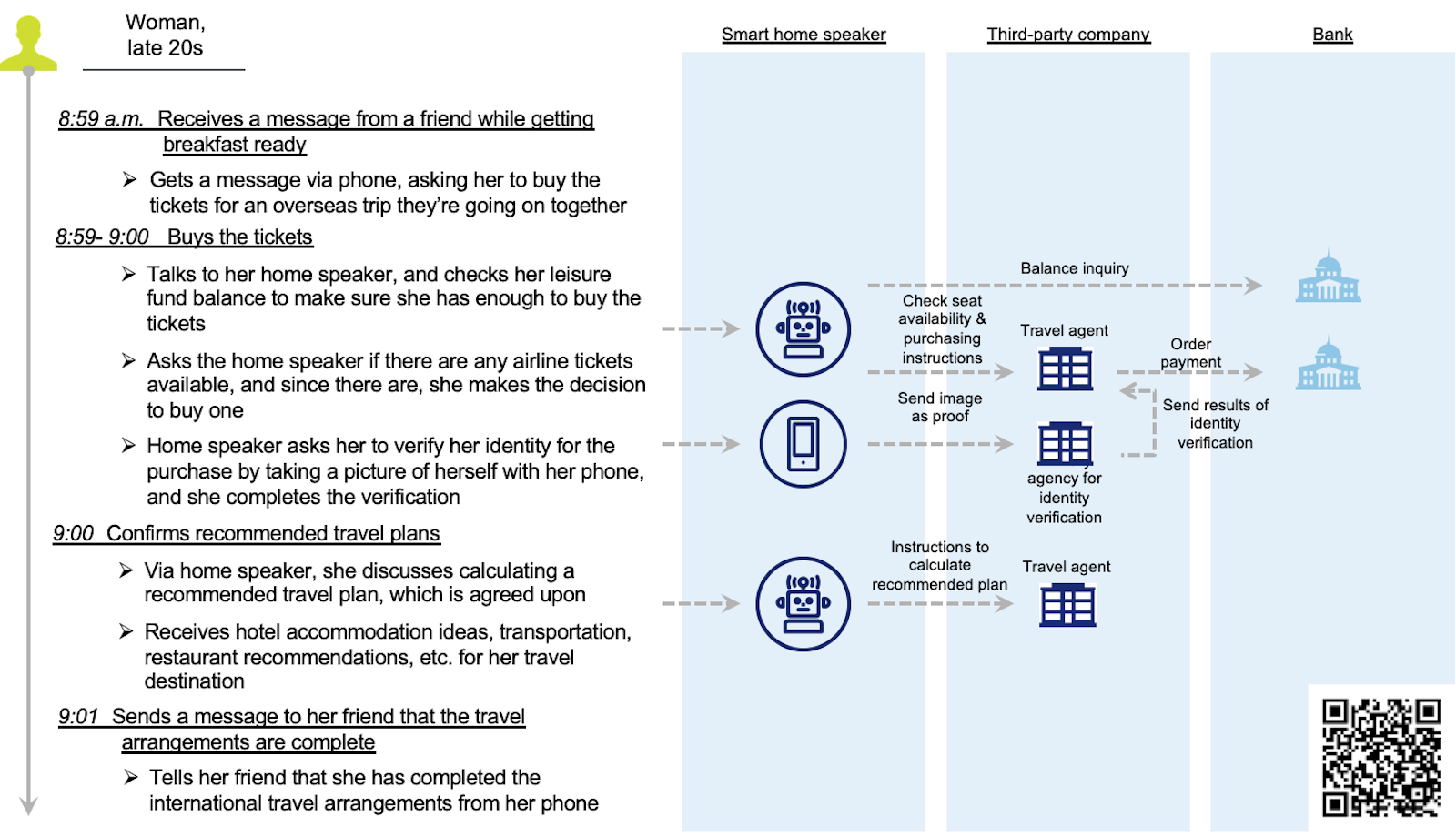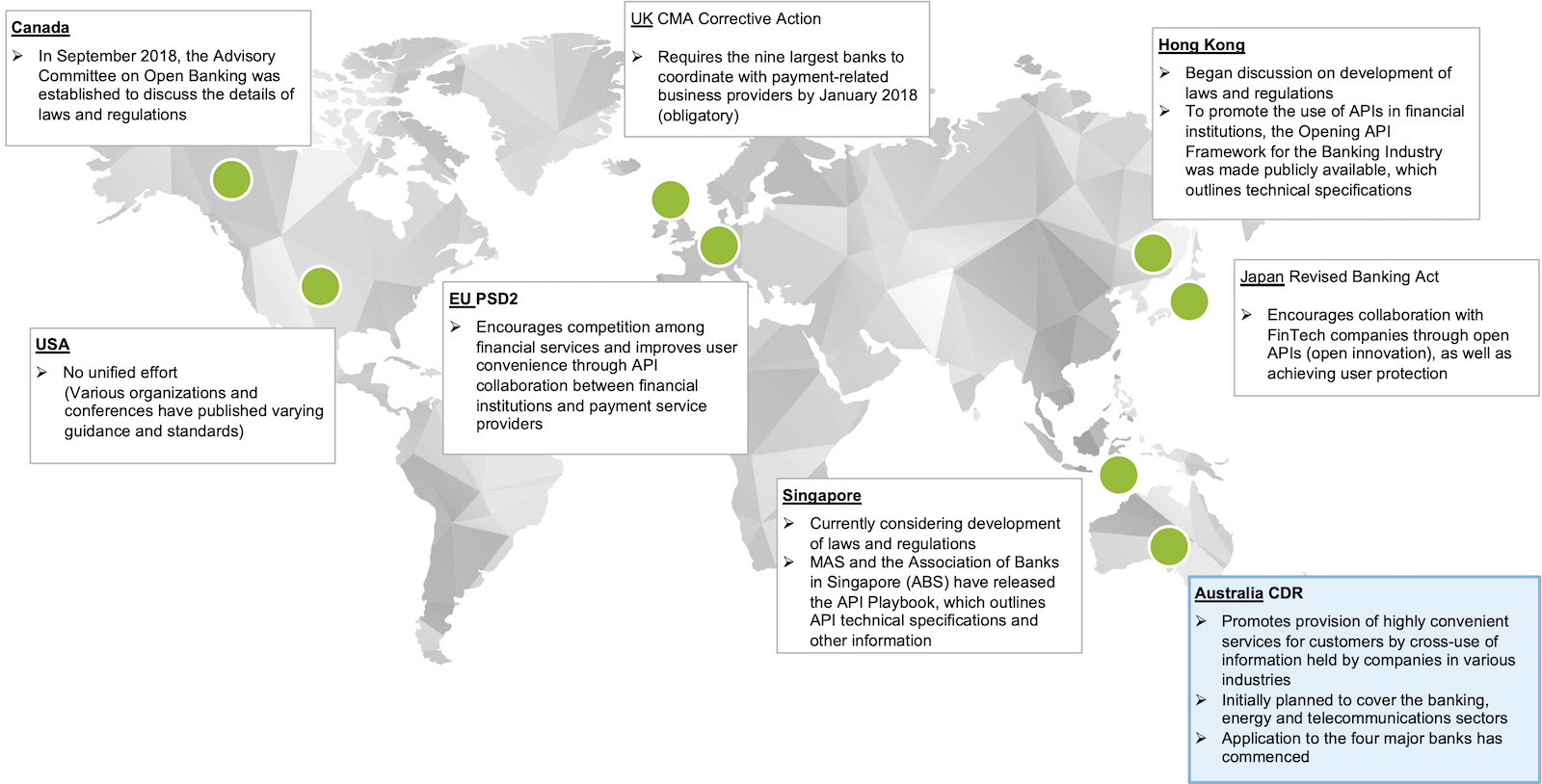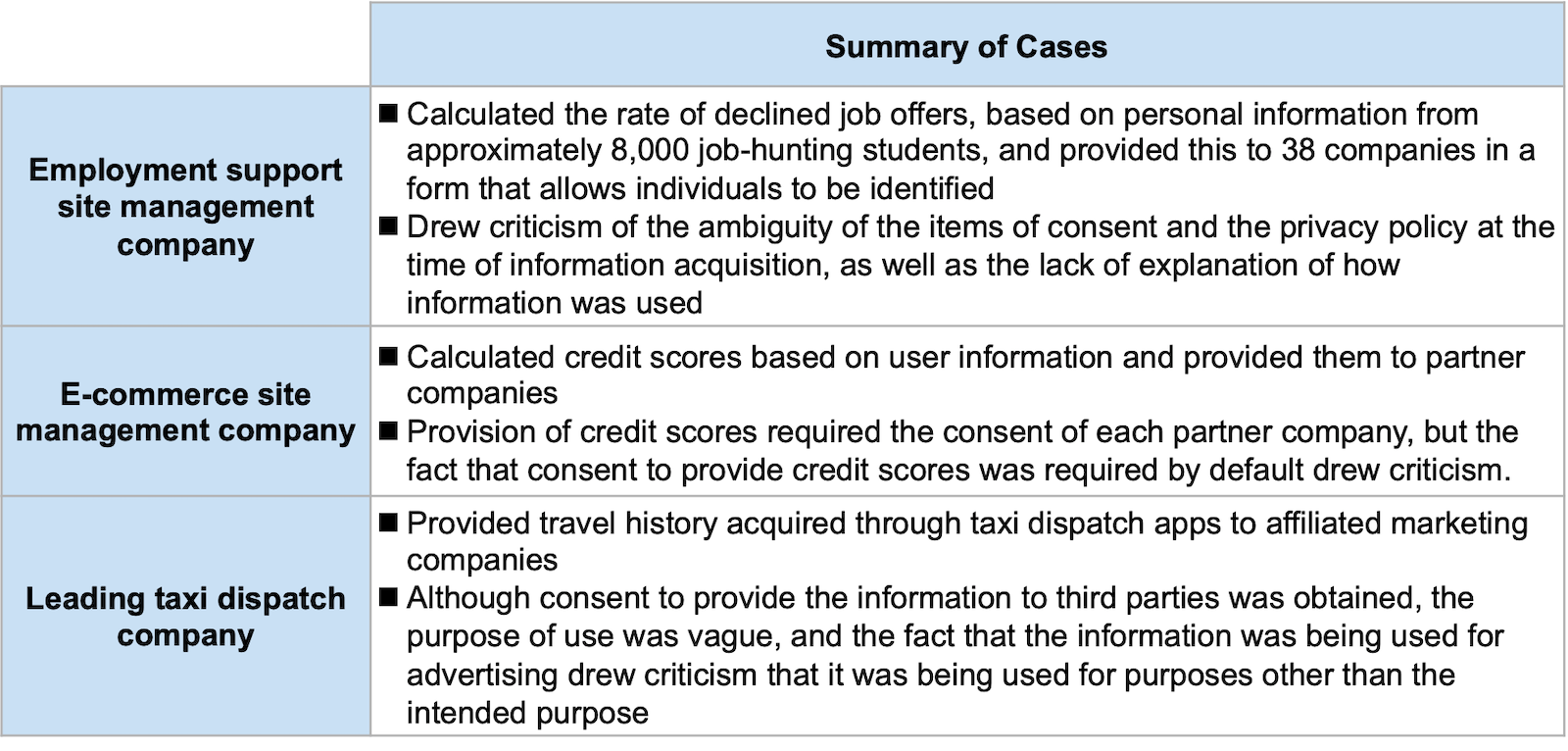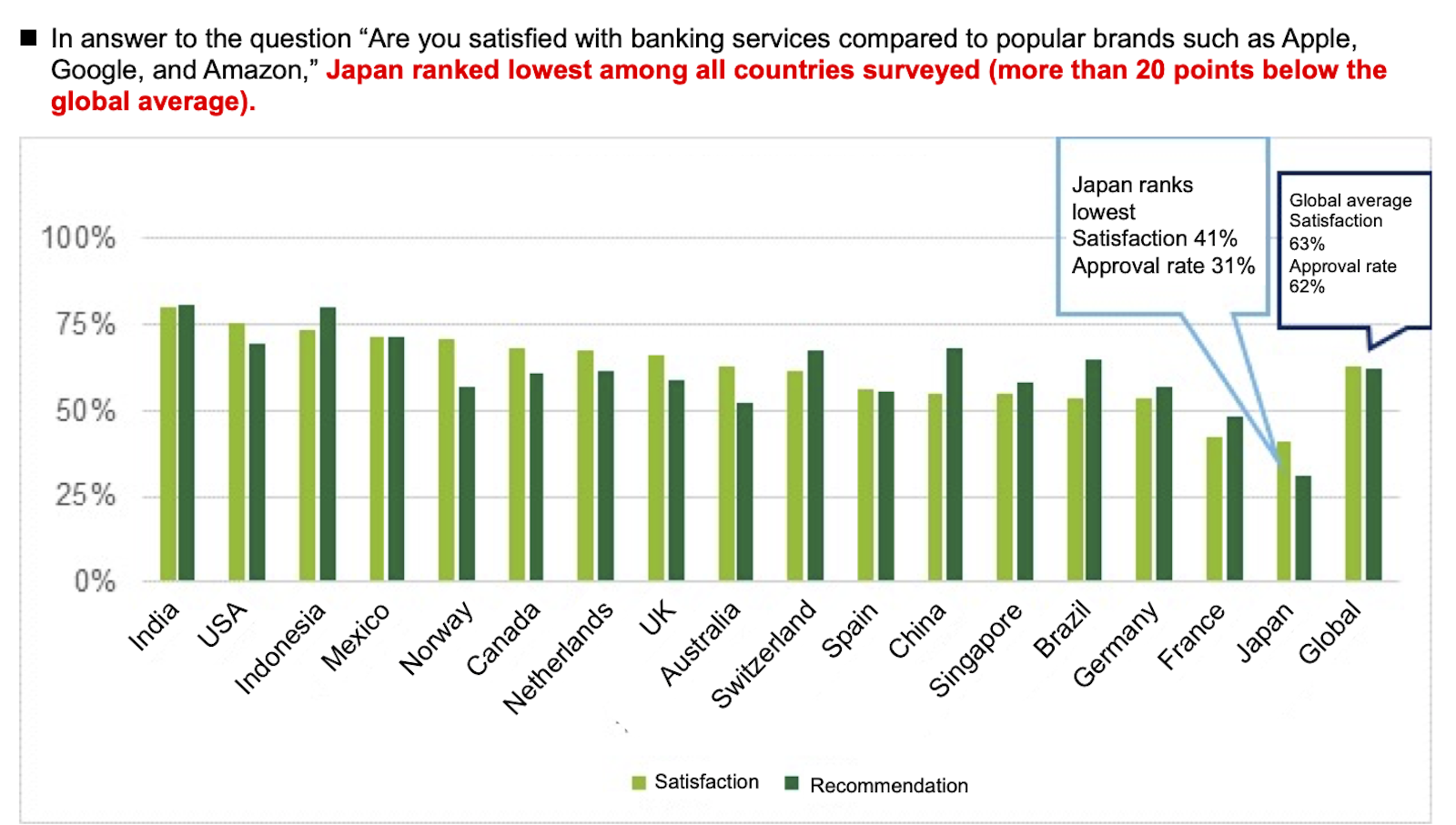The Potential of Open Banking in Tokyo

The World of Open Banking
Open banking is a business model that creates more convenient services by securing customers' data rights and enacting cross-use of data among companies. Here, "securing data rights" means ensuring that customers have the right to control their own data, including the right to consent to the provision of data to third-party companies other than their own bank, as well as the right to delete, to enjoy portability, and so on. Open banking allows external business providers to use data (deposit and withdrawal records) held by banks, with the consent of customers.
Through cross-use of data with third-party companies, banks can offer services not constrained by traditional notions of banking services. For example, ING Bank in the Netherlands has collaborated with fintech company Aleo to provide a business-to-business online store, for both its own customers and external customers, for transactions with companies across a range of industries, including services, manufacturing, and trading. Open banking enables banks to move away from relying on their own information (information obtained through their own transactions) and their own channels toward providing services through cross-use of data and channel collaboration with third-party companies, which will significantly change the way customers interact with banks.

Source: Based on "What does the future of retail banking look like in 2021?" by Deloitte. The Finastra video "What does the future of retail banking look like in 2021?", used as a reference for the relevant scenarios, can be viewed via QR code.
1. Conversation with a smart speaker is almost enough to complete a transactio
Voice technology is starting to be incorporated into and applied to the devices that surround us. By connecting banks with consumer electronics and electronics manufacturers, banking transactions can be conducted without physical manipulation or input.
2. Identity verification can be completed by self-photography with a smartphone
Just like voice technologies, cognitive technologies (image recognition) are beginning to see practical use across a variety of industries. In addition, companies and institutions offering centralized cross-company ID information are beginning to emerge overseas. Linking these companies and institutions with banks will enable banking transactions without document-based procedures.
3. Seamless implementation of complex services
Connecting companies in various industries with banks enables completion not only of money-related services but also complex travel-related services, for example, as shown in the scenario, through a single interface.
Trends in and Current Status of Open Banking
Open banking is underway mainly in Europe, the USA, and developed Asian countries, which is largely due to the progress of relevant authorities and related institutions. Figure 2 shows the laws and regulations of each country in regard to the promotion of open banking.
In particular, Consumer Data Right (CDR), which is Australia's system of legal regulation, is not limited to the principle of securing data rights, but also puts in place system-implementation requirements and technical standards. It is progressive because it is not limited to the banking industry—its scope is gradually expanding to include multiple industries such as energy and telecommunications. CDR already applies to the four largest banks in Australia, with a portal site provided to enable customers to personally choose the extent to which they will disclose their data (i.e. whether disclosure to outside companies is made).
Regulations and guidelines other than CDR are limited to the principle of obtaining consent from customers when disclosing data to third parties, and in most cases, the method of obtaining consent involves the bank obtaining consent for each third-party disclosure. In a sense, the banks are leading the way in obtaining consent for data disclosure. From this perspective, CDR represents a shift from a bank-led to a customer-led system, with customers taking the lead in giving consent for data disclosure.

Based on the concept of open banking, many financial institutions provide services that are not limited to traditional banking services. We are starting to see an increase in business models providing non-financial services starting from another company's platform, rather than business models providing financial services starting from the bank's own platform (system).
To give an overseas example, Citigroup (U.S.) launched a bicycle rental service based in New York in 2001. In May 2019, it began linking information with a ride-sharing service (the Lyft app) to provide real-time confirmation of availability and payment services. KBC Bank (the Netherlands) offers a one-stop online service for those considering moving to Brussels, linking information from government agencies to carry out complicated procedures such as opening bank accounts, arranging housing, and handling administrative procedures.
In Japan, driven by the revised Banking Act and the Act on the Protection of Personal Information, cross-use of data among companies has begun to make headway, and highly convenient services are beginning to emerge. On the other hand, in terms of securing data rights, banks still need to obtain customer consent for each instance of cross-use. In recent years, certain cases (Figure 3.) have attracted criticism for the cross-use of data among companies—for example, cases in which insufficient consent is obtained or cases showing strong resistance to the acquisition of data that tracks personal behavior, such as action-history data. Although banks carefully explain processes to customers and obtain their consent in order to "go on the offensive" (behave pro-actively), they are forced to "go on the defensive" because they are concerned that customers may complain and they are not sure what customers think about the cross-use of data.

Against this background, some companies are moving to create customer-led mechanisms for data distribution. For example, NTT DOCOMO has begun offering a Personal Data Dashboard service allowing users to set the scope of their own data-sharing, and the company is expected to launch a fully fledged data business that combines location and purchase information. In Japan, it is highly likely that the creation of a similar system will get underway without waiting for legal and regulatory support, with cross-use of data continuing to accelerate.
Expectations for Open Banking in Tokyo
Tokyo is home to a massive population and a great diversity of companies, which means that there are countless customer experiences. In other words, there are countless business opportunities for open banking. Megabanks also exist, which have the investment capacity to reap the benefits of these business opportunities. Despite this, there are no successful cases of this happening in advanced countries in Europe, the United States, and Asia that can be studied.
Japan's banking services have been thoroughly designed to be always available, never pausing—in fact, Japan is second to none in terms of "functional value." But what about "experience value"? Figure 4. shows part of a survey of 17,100 people in 17 countries conducted in May 2018 by the Deloitte Center for Financial Services. When asked if they were "satisfied with their banking services compared to the services provided by popular brands such as Apple, Google, and Amazon," most Japanese people answered that they were not satisfied, and Japan ranked last among all countries surveyed (more than 20 points below the global average). There is clear demand for services with high experience value, such as services offered by popular brands that successfully meet customer needs or services that are simple to operate with outstanding design.

As mentioned above, Tokyo offers countless opportunities for open-banking business and is home to countless companies with which banks can collaborate. If the creation of a customer-led system for safe and secure data distribution gets underway, and if cross-use of data among companies accelerates, there is the potential to create services with even higher experience value.
Yuta Maruyama
Senior Manager, Deloitte Tohmatsu Consulting LLC. Involved in formulating business plans for financial institutions, enhanced business management, development to implementation of Digital Innovation concepts, and structural formulation to implementation of system architecture, etc.Recently, he has been advocating for new methods of banking such as digitalization and open banking through projects such as digital-strategy development and implementation support.




